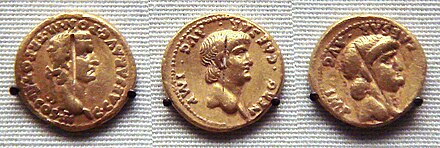
Back العلاقات التجارية الهندية الرومانية Arabic ইন্দো-রোমান বাণিজ্য সম্পর্ক Bengali/Bangla Relacions entre l'Imperi Romà i l'Índia Catalan Römisch-indische Beziehungen German Ινδο-Ρωμαϊκές εμπορικές σχέσεις Greek Comercio de la Antigua Roma con India Spanish روابط بازرگانی روم و هند Persian Échanges commerciaux entre la Rome antique et l'Inde French भारत और रोम के व्यापारिक सम्बन्ध Hindi Hubungan dagang India dengan Romawi ID



Indo-Roman trade relations (see also the spice trade and incense road) was trade between the Indian subcontinent and the Roman Empire in Europe and the Mediterranean Sea. Trade through the overland caravan routes via Asia Minor and the Middle East, though at a relative trickle compared to later times, preceded the southern trade route via the Red Sea which started around the beginning of the Common Era (CE) following the reign of Augustus and his conquest of Egypt in 30 BCE.[1]
The southern route so helped enhance trade between the ancient Roman Empire and the Indian subcontinent, that Roman politicians and historians are on record decrying the loss of silver and gold to buy silk to pamper Roman wives, and the southern route grew to eclipse and then totally supplant the overland trade route.[2] Roman and Greek traders frequented the ancient Tamil country, present day Southern India and Sri Lanka, securing trade with the seafaring Tamil states of the Pandyan, Chola and Chera dynasties and establishing trading settlements which secured trade with the Indian subcontinent by the Greco-Roman world since the time of the Ptolemaic dynasty[3] a few decades before the start of the Common Era and remained long after the fall of the Western Roman Empire.[4]